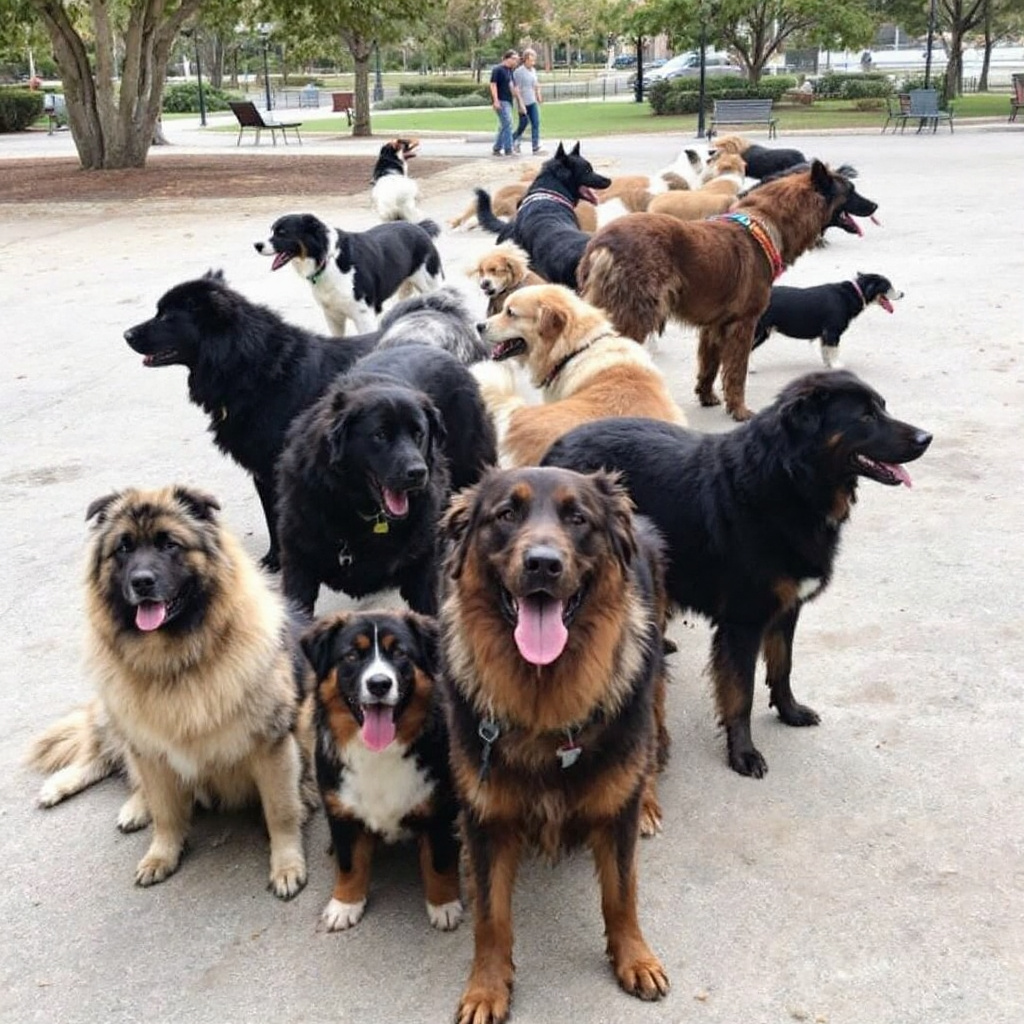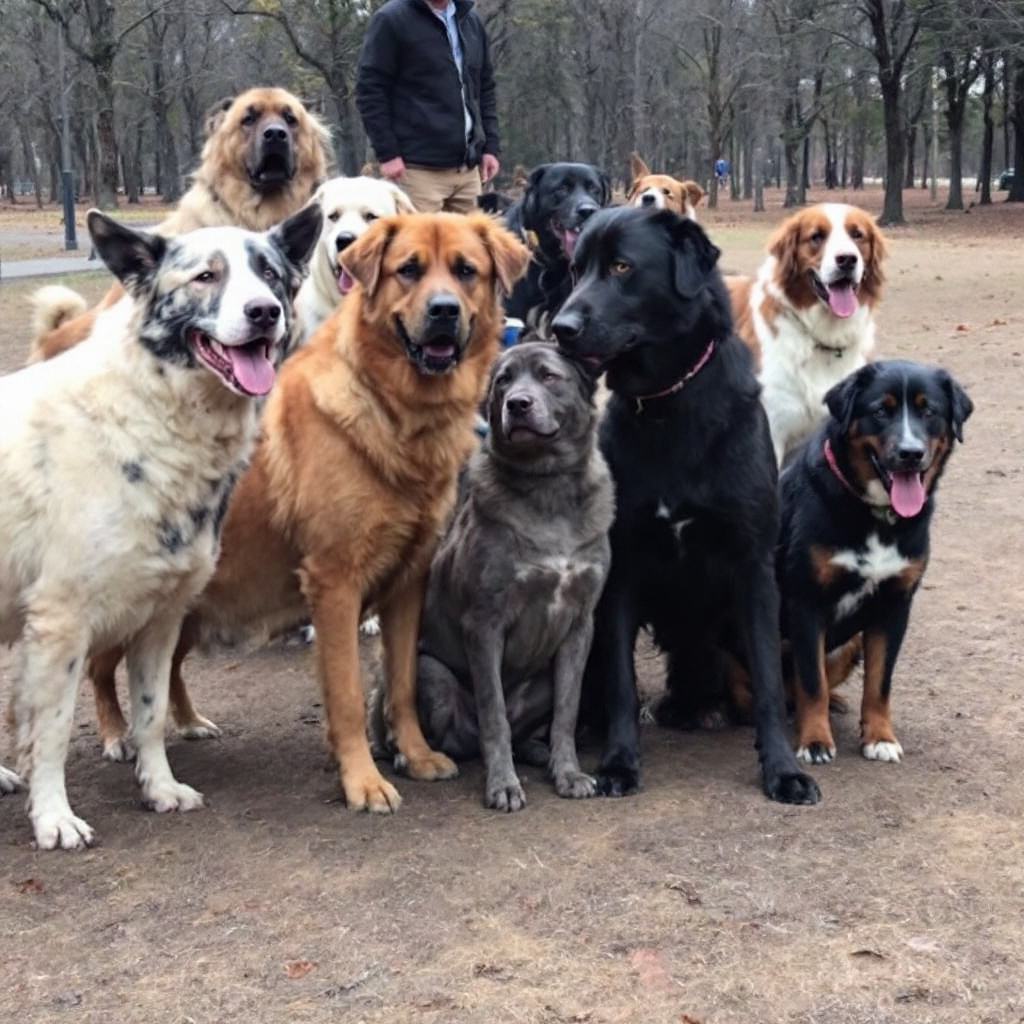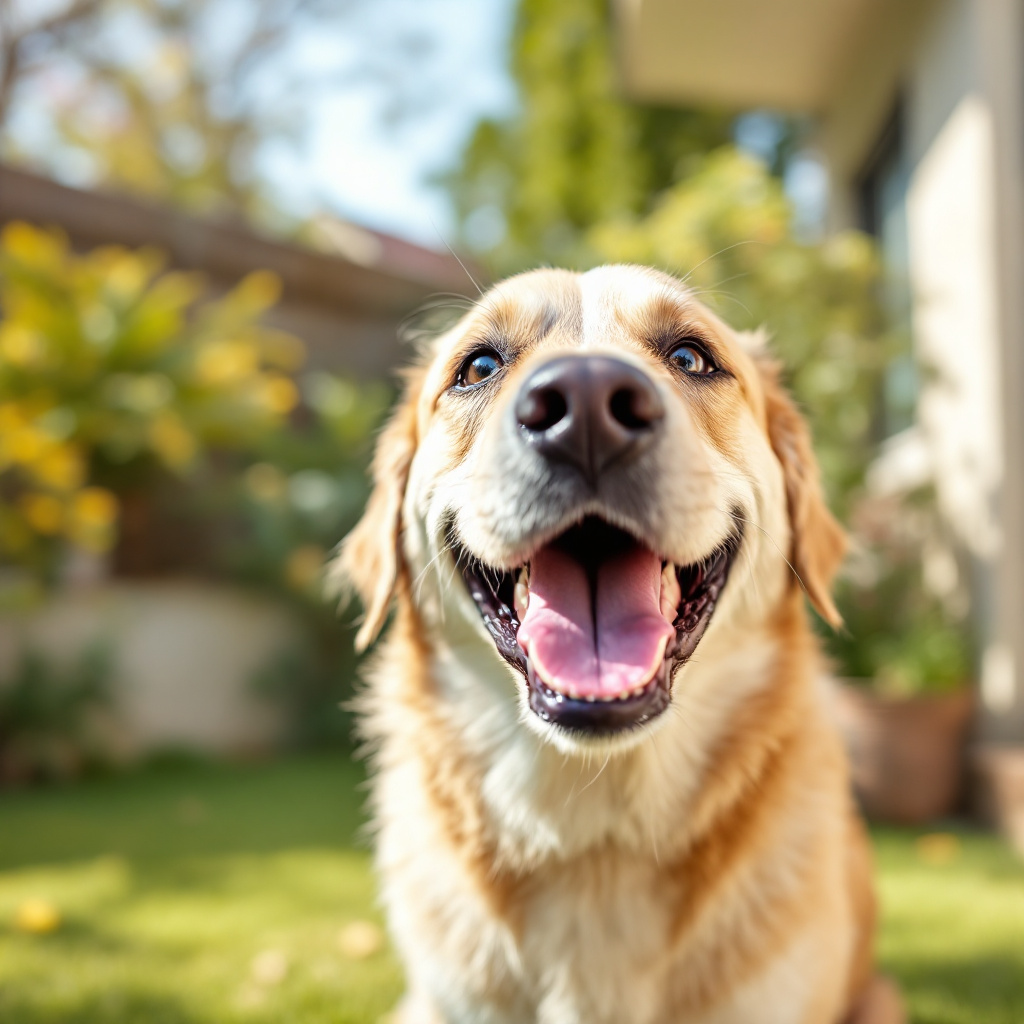Characteristics of large dog breeds: What you should know
Anyone who has ever looked an imposing St Bernard in the eye will immediately understand the fascination that large dog breeds exert. But there are a few things to consider before you acquire such a gentle giant. What makes these impressive four-legged friends so special? Let's take a look at the Characteristics of large dog breedsto find out if they suit your lifestyle.
Size and weight: more than just mass
The obvious first: large dog breeds are, well, large! But it's not just about sheer size. These dogs can easily reach the weight of an adult. A Bernese Mountain Dog, for example, weighs between 40 and 50 kilograms, and that can make quite a difference when it decides to sit on your lap. But that's not all.
In addition to their size, their muscle mass is particularly noticeable. Many of these dogs are real powerhouses. But the muscles of these four-legged friends are not just for show - they also have a purpose. Whether it's pulling a sledge through the deepest snow or serving as a loyal guard dog, their strength is outstanding.

Temperament: Gentle giants
In contrast to their powerful appearance, many large dogs are gentle souls. These giants can not only be protective, but also extremely patient and loving.
- Favourite with children: A lot of large dog breeds are considered to be particularly child-friendly. Their gentle nature makes them ideal for families. Think of the old Lassie episodes - a collie may not fall into the 'large' category, but the idea remains. Breeds such as Newfoundlands and St Bernards are notorious for their friendly nature towards the littlest members of the family.
- Confident and calm: Large dogs often appear calmer and more confident than their smaller counterparts. A golden retriever, for example, radiates a natural calm that lends any room a cosy, warm atmosphere.
Urge to move: off to adventure!
Large dog breeds often have a pronounced urge to exercise. If you want to get one of these four-legged friends, you should be prepared to keep them active - and yes, that means more than just the proverbial walk around the block.
- Long walks: Forget your couch-potato dreams; regular, long walks are now part of the programme. Your dog will love it!
- Active in the countryside: Dogs like German Shepherds and Great Danes love to jump around, run and explore outdoors. A large garden is a bonus, but a park-like environment will also do.
- Spiritual development: Large dogs are often intelligent and need mental stimulation. Brain games or learning new tricks are particularly suitable for this.
Health: prevention is better than aftercare
Large dogs have special health needs, and paying attention to them contributes to their longevity. Unfortunately, they are more susceptible to certain diseases, so responsibility is required.
Hip dysplasia, gastric torsion - these and other health problems make large dog breeds appear more susceptible than their smaller counterparts. Regular visits to the vet and careful observation of the dog's behaviour are therefore essential.
Nutrition: quality instead of quantity
A balanced diet is particularly important for large breeds. They often literally never run out of appetite. High-quality food is essential to cover their energy requirements and promote their health.
You should also make sure that your dogs do not become overweight. The additional pressure on joints and bones can lead to a number of problems that need to be avoided. It is better to feed smaller portions throughout the day.
Training tips for large dog breeds
Training a large dog differs in some ways from training a smaller colleague. Whether it's a Great Dane or a Doberman, clear rules and consistent training are the key to harmony between humans and animals.
Start early
The earlier the training starts, the better. Large dogs like to learn quickly, but it is almost inevitable that a young puppy will get its head handed to it. This applies even more to large breeds, so clear instructions should be given before - literally - the child falls into the well.
Reward-based training
Rewards are the best way to show your dog that he is doing something right. Whether it's favourite treats or extended cuddles, the positive approach promotes a trusting relationship.
Maintaining social contacts
This may seem obvious, but is often forgotten: Regular contact with other dogs and people is important for socialisation. This can make a huge difference, especially for young dogs.
Conclusion
The Characteristics of large dog breeds make them unique companions that require love and responsibility. Their size goes hand in hand with specific needs, their gentle nature and their often high Energy level. If you are interested in such a dog companion, you should be prepared to invest time in exercise, training and care. In return, however, you will get a loyal, lovable partner for life.
So, are you ready for the adventure? With a big dog by your side, you won't have to worry about exciting moments and warm company. And as they say, what better way to wind down after a long day than to put your paws up - or in this case, maybe just sit next to them and enjoy the peace and quiet!
FAQs
What special characteristics should you expect from large dog breeds?
Large dog breeds differ from smaller breeds in many ways. They are impressive not only because of their physical appearance, but also because of their temperament. A notable example: many large dogs have a gentle disposition and tend to be fond of children and good-natured. Added to this is their impressive ability to learn quickly and obediently follow commands, provided they are properly trained.
What is officially considered a "big dog"?
A dog is classed as "large" when it reaches a height at the withers of at least 40 cm or a weight of at least 20 kg when fully grown. This definition varies depending on location and legal regulations, but in general these figures help to make the assessment.
Are there any particularly healthy breeds among the large dog breeds?
Yes, there are some large dog breeds that are known for their robust health. The Alaskan Malamute and the Siberian Husky are examples of larger dogs that are considered quite sound in health. However, as with all breeds, individualised care and nutrition is crucial to ensure your dog's health.
Do large dogs need special training?
Yes, because of their size and strength, well-structured training is especially important for large dogs. It should start from puppyhood to ensure your dog is well behaved and socialised. A purely base-based approach is effective as it encourages positive reinforcement of behaviour.
How much exercise do large dog breeds really need?
Large dogs usually need more exercise than smaller breeds. This can include daily walks, outdoor play and even tasks that require both mental and physical exertion. Providing your dog with regular exercise promotes health and well-being - not to mention a balanced mind.
Author
-

David is a passionate aquarist with more than 20 years of experience in setting up and maintaining freshwater and saltwater aquariums. He specialises in the biodiversity of aquatic ecosystems, aquascaping and the species-appropriate keeping of aquarium fish. His articles on haustierewissen.de are a treasure trove for aquarium enthusiasts looking for sound advice and creative ideas for their underwater worlds.
View all posts




